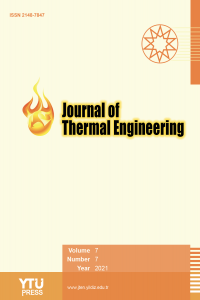Abstract
References
- The article references can be accessed from the .pdf file.
Influence of Convective Boundary Condition on heat and mass transfer in a Walters’ B fluid over a vertical stretching surface with thermal-diffusion effect
Abstract
This paper presents the influence of Convective Boundary Condition on heat and mass transfer in a Walters’ B fluid over a vertical stretching sheet with the thermal-diffusion effect. The coupled nonlinear partial differential equations governing the system are presented in the form of coupled ordinary differential equations via similarity transformation variables which then solved by the Homotopy Analysis Method. The effect of various parameters on velocity, temperature and concentration profiles as well as Local Skin-friction, Nusselt and Sherwood numbers are plotted and discussed. The result shows among others that large values of the thermal buoyancy parameter accelerate the motion of the fluid and cools the thermal layer while the surface heat transfer is boosted when the strength of Radiation improves. Also, large values of Biot number constitute strong convective heating which consequently maximizes thermal boundary layer thickness and paves way for the penetration of thermal effect to the quiescent fluid. Biot number is of great importance in the engineering field for drying of the materials.
Keywords
Thermal Radiation Similarity Variables local Weissenberg number thermal-diffusion Homotopy Analysis Method
References
- The article references can be accessed from the .pdf file.
Details
| Primary Language | English |
|---|---|
| Subjects | Thermodynamics and Statistical Physics |
| Journal Section | Articles |
| Authors | |
| Publication Date | November 18, 2021 |
| Submission Date | May 28, 2017 |
| Published in Issue | Year 2021 Volume: 7 Issue: 7 |
Cite
IMPORTANT NOTE: JOURNAL SUBMISSION LINK http://eds.yildiz.edu.tr/journal-of-thermal-engineering


